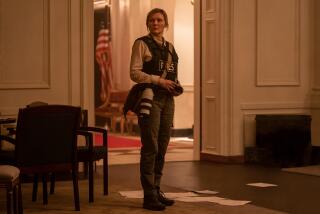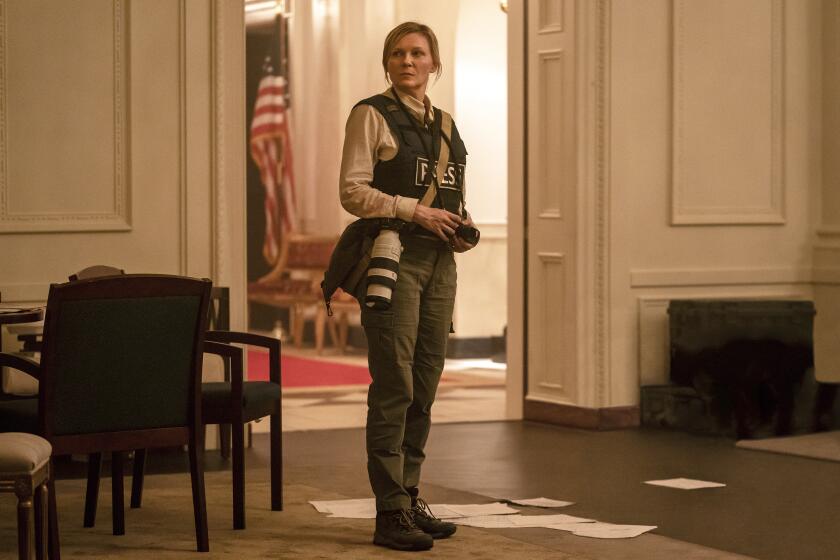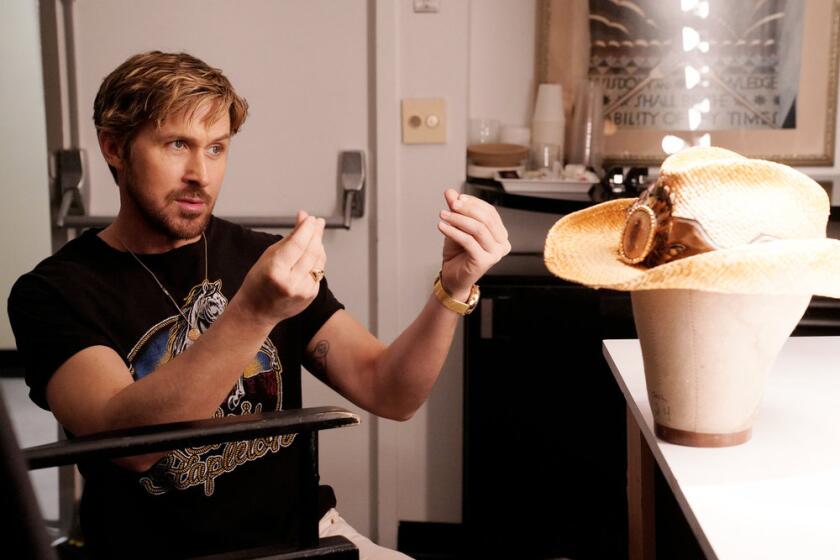A Hollywood beginning
“We Are Marshall,” which opens Dec. 22, tells the story of the worst thing that ever happened to Huntington, W.Va. On the evening of Nov. 14, 1970, most of the Marshall University football team, its coaches and numerous team boosters and town leaders were returning from a narrow loss to East Carolina when, in bad weather, the jet crashed on approach, killing everyone onboard.
All together, 75 people died. “We Are Marshall” -- directed by McG of “Charlie’s Angels” fame and starring Matthew McConaughey, Matthew Fox, David Strathairn and Ian McShane -- is about how the football program was revived.
“Revived” is a relative concept, however. For decades after the crash, the team posted a miserable record. Only in the 1990s did its fortunes reverse.
There has always been tremendous anxiety, a morose trepidation, about reliving what became known around town as “The Marshall Crash.” As Keith Spears, Marshall’s vice president for communication, explained, the university had been approached many times over the years to lend its blessing to a film about the tragedy, but “We Are Marshall” was the first project that passed muster with, as he put it, “the survivors” -- the family members of those who died in the crash.
“Marshall University didn’t want a movie about a crash,” he said. “It was important that the institution be protected and that the memory of those who died be honored.” A 1970 Marshall graduate who lost classmates in the crash, Spears struggled to maintain his composure as he spoke, choking back tears several times.
It helped that producer Basil Iwanyk arrived in town with a completed script by Jamie Linden, which served to back up the filmmakers’ intentions. The mood of the community was also greatly influenced by McG, who said he was determined to tell the story as reverently as possibly, in part by shooting on location in Huntington. “The more we took Hollywood out of the movie, the better it was serviced,” he said. “I wanted to show the town as a character and to populate the film with the families of the survivors.”
The movie really tells two stories: that of the football team doing the impossible and taking to the field once again and that of the town recovering from collective grief based in true trauma (it wasn’t uncommon for residents to attend two or three funerals a day).
It’s a neat package, but the truth is, the town has never really recovered.
“That event defined so much of what Huntington was all about,” said Clint McElroy, a local radio personality who appeared as an extra in the movie. “But it defined it in a morbid way. It threw a dark cloud over the city.”
A city on the brink
ONE of the ironies that the film -- confined as it is to the early ‘70s -- can’t deal with is that by the time the football program rose to national prominence, showcasing NFL-bound stars such as Chad Pennington and Randy Moss, this small American city on the Ohio River had been reduced to a shell of its former self. (The culprit was a combination of a declining manufacturing base and a lack of economic opportunity for younger Huntingtonians.) In the film, it is predicted, quite accurately, that football will once again achieve glory in Huntington. What is not predicted is that Huntington would see almost a third of its citizens choose to live someplace else, the population dropping from almost 80,000 to fewer than 50,000.
Understandably, during filming this year, Huntington was gripped by movie fever.
The publisher of a city magazine, Huntington Quarterly, offered daily dispatches. Women kept tabs on McConaughey’s whereabouts. Since then, the buzz has built (no one seemed to be talking about anything else during a recent visit). It will culminate with a gala premiere release at Huntington’s classic old movie house, the Keith-Albee Theater, in the middle of the city’s emptied-out downtown.
What Huntingtonians are going to see on film -- in addition to some pretty horrific sport coats -- is a town that no longer exists.
There were fears that the filmmakers would depict Huntington as a hillbilly enclave, “Deliverance” with a gridiron, but if anything, McG and his crew have succeeded in conjuring up the small metropolis, a small city on the way up.
At the time of the crash, Marshall football was at the center of Huntington’s social life.
Men donned suits and ties for the games, women wore fine dresses, high heels and hats. There was a big-city-in-a-small-town feel to it: After the game, win or lose, there would be parties at various clubs and in people’s homes. The games, which Marshall usually lost, were simply the excuse.
Post-crash, there was an economic slump, and Huntington began its slow slide in the 1970s. As the football teams recorded losing season after losing season, basketball became a bigger deal. By the late ‘70s and early ‘80s, the cool thing to do was watch the Thundering Herd play hoops, in a modern arena (the Herd played football in Fairfield Stadium, a crumbling relic from the 1920s). Marshall has sent some great football players to the pro ranks in recent years, but the most famous athlete the college produced was a pro basketball Hall of Famer, Hal Greer. There’s a street named after this former guard for the 76ers, a teammate of Wilt Chamberlain.
‘A different feel here’
THE downtown has only in the last five years or so begun to stage a tentative renaissance, combating the inevitable threat of several nearby Wal-Marts.
Perhaps the movie will compel Huntingtonians to acknowledge what they have given up: their once-vibrant city. “We Are Marshall” depicts a place of sophistication, determined to succeed, ready to take on all comers and sticking together despite the odds.
“There’s a different feel here,” McElroy said. “There’s been change in the population. A lot of people didn’t know the story. The movie has reminded people what an amazing comeback Marshall made.”
McG also picked up the responsibility to assist Huntington by insisting on shooting in the area in the hopes of giving the town an economic boost. “I wanted to do my part to revitalize the city’s downtown, to clear up some of the negativity.”
According to Spears, Red Dawson, the only coach not killed in the crash (portrayed by Fox), had always scoffed at the idea of a movie. But ultimately, he saw the value that “We Are Marshall” could have for a community that had, for all practical purposes, been in mourning for a generation.
“He said that maybe now we could finally close the book on this thing,” Spears said.
Close one book -- and maybe open another one.
More to Read
Only good movies
Get the Indie Focus newsletter, Mark Olsen's weekly guide to the world of cinema.
You may occasionally receive promotional content from the Los Angeles Times.






